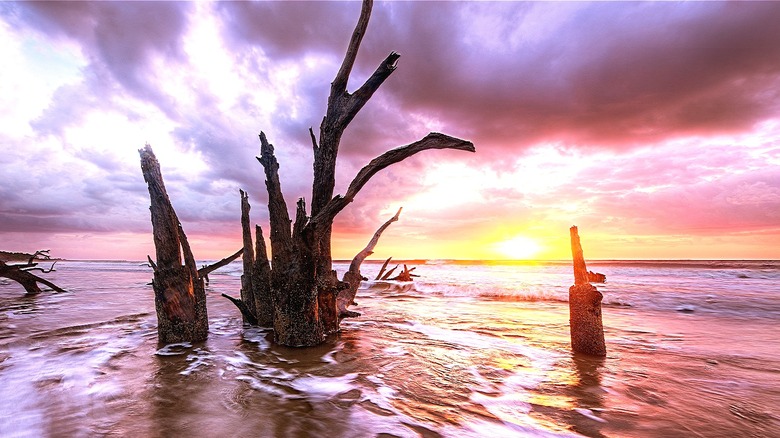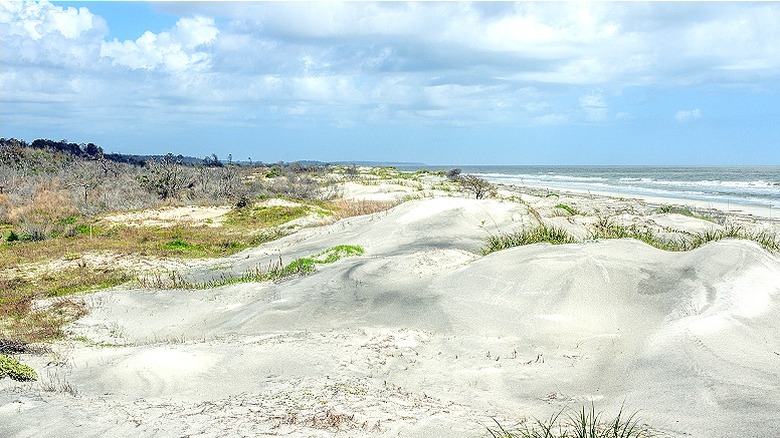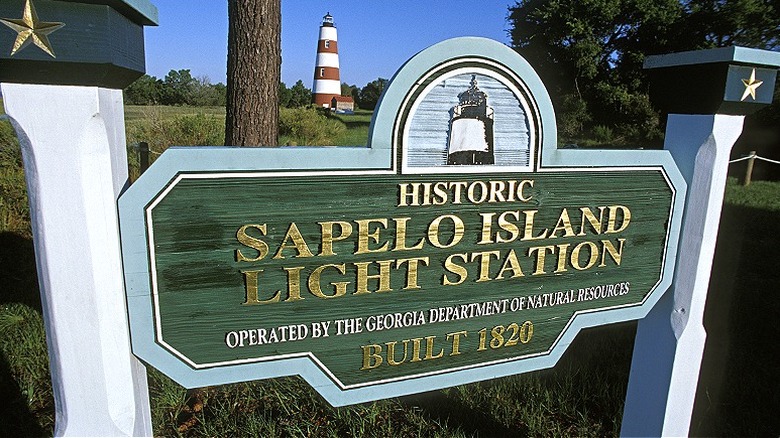One Of Georgia's Most Unique Destinations Is A Barrier Island With Beaches Rivaling Australia's
Georgia's coast, with its winding saltwater creeks and marshes, doesn't immediately scream "beach vacay." But the state's outer barrier islands have beautiful, sandy beaches that rival nearby states — and even far-off destinations. One such island is Sapelo, located just offshore of the town of Darien. Georgia's Department of Natural Resources manages 96% of the island as a wildlife management area, while the other 4% is privately owned. Impressive numbers when you consider that the island is about the size of Manhattan; this amount of undeveloped beauty along the U.S. East Coast is a rare find indeed.
Removed from the mainland by only 7 miles, Sapelo is a unique gem bursting with history. Nearby was the first European settlement in the Americas: the 1526 Spanish mission of San Miguel de Gualdape, now lost to time. Cattle ranchers and plantations used the land in the following centuries. After the Civil War, formerly enslaved people settled on the island, forming the town of Hog Hammock. Like other Gullah Geechee communities along the coast, this community of West African descendants developed a unique culture thanks to its isolation. Today, Sapelo is home to about 70 full-time residents, a historic lighthouse, the University of Georgia's Marine Institute, and the Sapelo Island National Estuarine Research Reserve.
Getting to Sapelo Island
As with all good island adventures, getting to Sapelo is half the fun. A visitor's center and gift shop for the island is located in Meridian, Georgia. The island itself is only accessible by private boat or ferry, and the ferry only carries pre-registered guests; so, you must book a tour or accommodations to get to the island. The ferry departs Meridian and usually makes three trips a day (except on some Sundays when they operate a reduced schedule). The ferry ride across Doboy Sound to this remote island adds an exotic feeling — it is almost like a trip back in time.
The beaches of the Georgia coast can be expansive, thanks to the area's 7-foot-average tides. The main beach area on Sapelo stretches from Nanny Goat Beach on the south end to Cabretta on the north. Besides beach-going and nature-watching, the island is popular with hunters and fishers. It's also home to a rare herd of feral cattle left by Scottish ranchers in the mid-1700s.
The ferry unloads on the island's south end, and guided tours pick you up at the dock. Hog Hammock, an hour's walk north, includes a tiny general store and a few cottages. A tour is the best way to learn the most about the community, with seasoned historians or local community members leading most of them. Reviews are mixed, however, so research and book your guide in advance.
Exploring the Georgia coast on Sapelo
You can book bus tours through the visitors center in Meridian, where you can also learn about hiking and beach-going opportunities on Sapelo. Private, small-group jeep tours are available from Explore Sapelo, and if you'd like to stay overnight to soak up the island's beauty, Sapelo Birdhouses offers cottage rentals. For large groups, the state maintains the historic 1810 Reynolds Mansion as overnight accommodation for groups of 16 to 25 people, and group camping (10 to 25 people) is also allowed at the Cabretta Pioneer Campground.
Like the rest of the region, the Golden Isles experience hot, humid, and buggy summers and milder winters. Be sure to come to the island prepared since limited amenities are available once you land. Be sure to pack plenty of water, sunscreen, and bug repellant; comfortable walking shoes are also a must since most visitors spend lots of time walking.
Interestingly, the island is the closest point of land to another lesser-known attraction: Grey's Reef National Marine Sanctuary. The reef is located 40 miles southeast of Savannah, Georgia, and is home to hundreds of types of fish, colorful corals, and sponges. The area off Georgia's coast is also a breeding ground for the endangered North Atlantic Right Whale, and many sea turtles come to nest on Sapelo's beaches.


